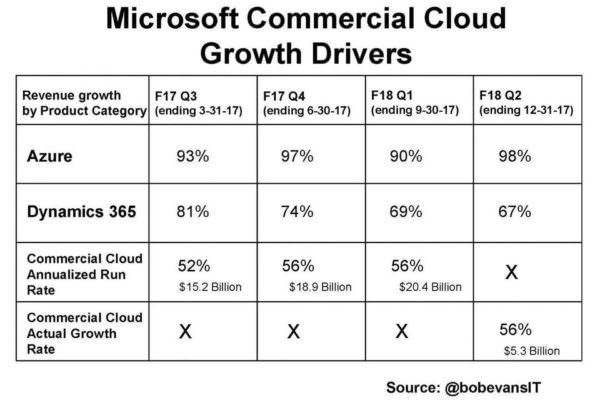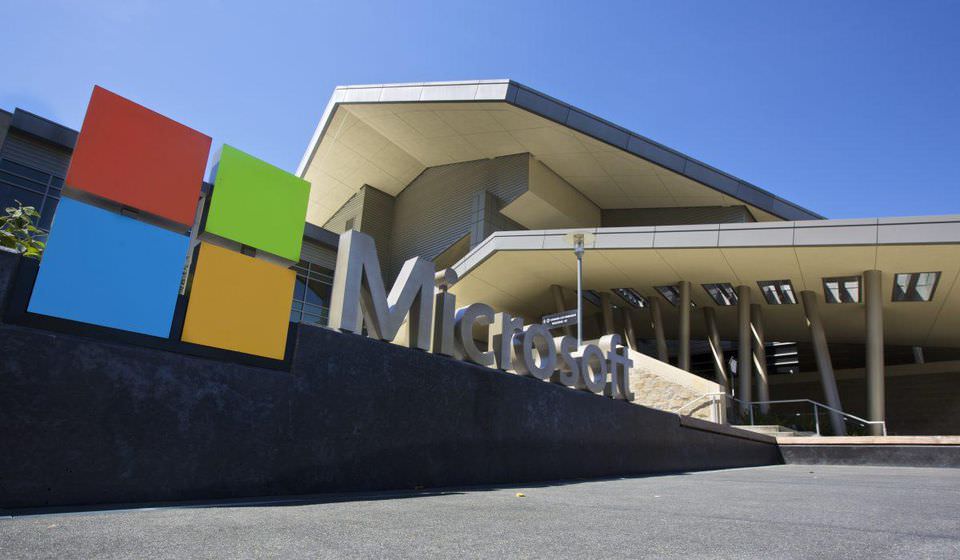Some of Microsoft’s largest customers are moving their production SAP workloads as well as other mission-critical applications to the Azure Cloud, offering conclusive proof that the cloud has become a mainstream enterprise-technology foundation for anything a global corporation chooses to deploy there.
Speaking at a recent investors conference, Microsoft corporate vice-president and head of Cloud and Enterprise Marketing Takeshi Numoto said, “Today we’re seeing some of our largest customers move their production SAP workloads to Azure.
“And so what’s getting migrated is becoming bigger and more substantial and more mission-critical, and that’s also driving growth as well,” Numoto said.
“It’s not just SAP—it’s an example of more critical, big workloads that have a lot of consumption associated with it.”
In a followup question to Numoto as he was being interviewed by analyst Adam Holt of MoffettNathanson, Holt noted that “there aren’t many examples of applications that would be more complex, more processor-intensive or data-intensive than an SAP ERP application” and then asked Numoto to explain what’s behind this striking proof that Azure has hit the ultimate hyperscale in the enterprise.
“It’s a confluence of many things,” Numoto said. “I do think there is an increasing openness and confidence that customers have in their use of the cloud. They’ve been on their cloud journey for a while and they are becoming more familiarized and comfortable with the factors.”
Numoto then pointed out that the cloud has reached a level of technological sophistication and extended capability that rather than just being a 1:1 alternative to traditional on-premises technology, it can offer superior performance.
“There’s also, I like to think, increasing recognition in the cloud as that place where you can really realize very high agility and sort of dynamic changes that you need—and so as people think about various technologies, cloud becomes much more of a mainstream conversation.”
These superscale cloud migrations are clearly becoming a big contributor to the stunning commercial-cloud revenue growth rates that Microsoft continues to report for its Azure platform services, and as Numoto further pointed out in comments that I’ll get to in just a moment, these huge Azure migrations pull along lots of other related workloads as well.
Here’s a look at Azure growth rates over the four quarters of calendar 2017(Microsoft’s fiscal year runs July 1 through June 30), along with parallel numbers for other key products in the Microsoft commercial cloud:

Citing another extremely complex and data-intensive workload, Numoto said software vendor Temenos, which makes enterprise applications for the banking industry, has created versions of its apps for the Azure cloud.
“We have an increasing repertoire of big mission-critical workloads coming to Azure,” he said. The alignment with SAP for some of these massive migrations is likely a result of the enhanced strategic partnership announced late last year by Microsoft and SAP to allow them to be able to deliver more customer-centric results as the worlds of cloud and on-premises become increasingly intertwined.
And as those huge migrations occur, they don’t happen in isolation.
“When you move a major workload, you definitely have lots of adjacencies that get pulled through with it,” Numoto said.
“You don’t just move your core workload, because your core workload now has lots of data that sits in the cloud. So it’s natural as a next step for most customers to think about essentially applying a lot of the data technologies to do the analytics against the data that now resides in the cloud.”
(In the drink-your-own-champagne category, Microsoft itself just last week completed the migration of its own massive set of SAP workloads to Azure. As described in a Microsoft blog post, the migration of the 50-terabyte SAP landscape over to Azure took about 12 months: “Moving to the cloud will save us money, but this is really about becoming more agile and innovative,” says Mike Taylor, manager of the Microsoft SAP program in Core Services Engineering and Operations.)
Throughout his conversation with analyst Holt, Numoto emphasized on a few different occasions that each customer’s journey to the cloud is unique. But on a macro scale, those individual journeys cluster into one of three groups:
- A measured approach: “Sometimes customers want to basically append cloud capabilities to what they already have on-prem—so it might just be around adding monitoring management, or backup, or doing disaster recovery using Azure as a secondary site.”
- An aggressive approach: At what Numoto called “the other extreme,” some customers “are really thinking about much more of a cloud-centric model, and are re-architecting their applications and deploying them to Azure, or to Azure Stack if they want more deployment flexibility.”
- A blended approach: “And then there’s a large portion in the middle where customers are really thinking about migrating their workloads to Azure.” In this case, Numoto said, Microsoft offers the Azure Migrate service for shifting virtual machines, a database-migration service, and various partner solutions.
As those various approaches evolve, Microsoft will continue to aggressively court enterprise-application vendors to make those products available on Azure as more and more business leaders become increasingly comfortable with the cloud for their most-demanding IT functions.
“I think getting applications—particularly large business applications—onto Azure is incredibly important because, again, there is a flywheel effect. When you have a business state being deposited in the cloud, that then creates gravity for more data or more applications,” Numoto said.
“That’s why some of the examples like the SAP one I mentioned—and Adobe is another great example—are the big reasons we’re continuing to work on enlisting more ISV partnerships to bring their applications to Azure.”
*******************
RECOMMENDED READING FROM CLOUD WARS:
The World’s Top 5 Cloud-Computing Suppliers: #1 Microsoft, #2 Amazon, #3 Salesforce, #4 SAP, #5 IBM
Amazon Versus Oracle: The Battle for Cloud Database Leadership
As Amazon Battles with Retailers, Microsoft Leads Them into the Cloud
Why Microsoft Is #1 in the Cloud: 10 Key Insights
SAP’s Stunning Transformation: Qualtrics Already “Crown Jewel of Company”
Watch Out, Microsoft and Amazon: Google Cloud CEO Thomas Kurian Plans To Be #1
The Coming Hybrid Wave: Where Do Microsoft, IBM and Amazon Stand? (Part 1 of 2)
Oracle, SAP and Workday Driving Red-Hot Cloud ERP Growth Into 2019
*********************
Subscribe to the Cloud Wars Newsletter for twice-monthly in-depth analysis of the major cloud vendors from the perspective of business customers. It’s free, it’s exclusive, and it’s great!








